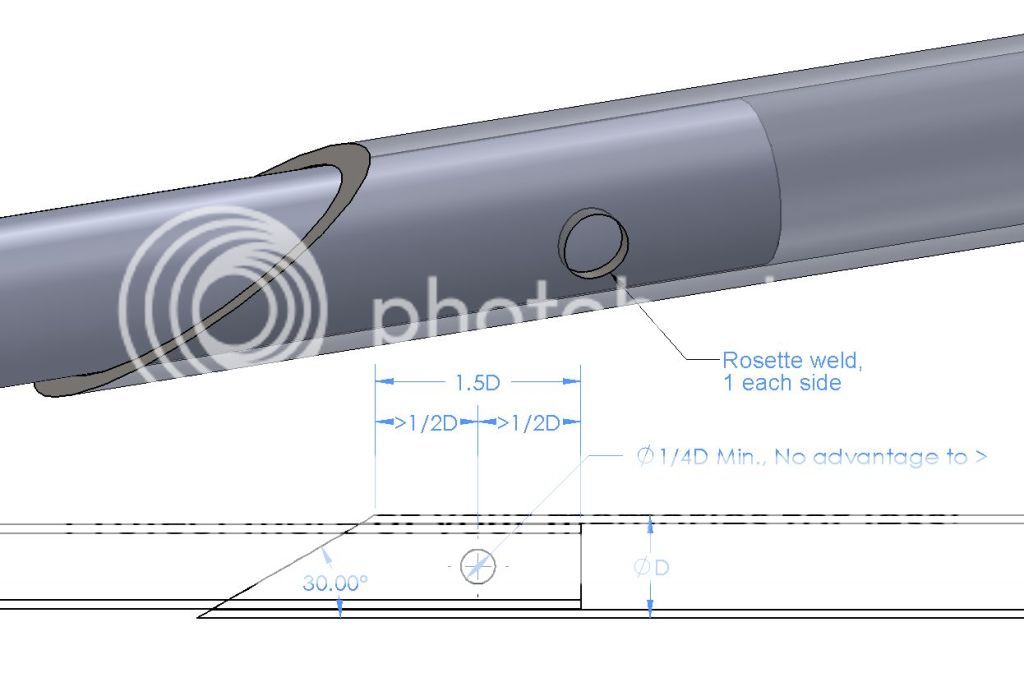So, as I was reading myself to sleep with my copy of Construction of Tubular Steel Fuselages (as so many of us do) it occurred to me to share a few of the many good practices the book describes. I've seen a few failures that might have been prevented by reducing stress risers using these techniques. I'd highly recommend the book to any less experienced builder, such as myself, designing or welding their own frame or wishbones. There is good info on weld sequence and direction, gussets, br@ck#ts, etc. I've modeled the details in SolidWorks to avoid reproducing parts of the book.
Attached also are a couple of examples from the Golden Age of motor racing, back in the day when suspensions moved and the driver was the traction control. These are from http://www.britishracecar.com/ a site worthy of support, though a potential time vortex.
The key concept, for me, was to remember that the force vectors on the tubes are parallel the tube axis and to therefore avoid creating stress risers by interrupting them abruptly. i.e. at a right angle. (You do have your "I Will Not Place a Tube in Bending" oath posted in a conspicuous place in the shop, don't you?
Scarf joint, preferred:

Scarf joint when there is not enough engagement for a long scarf:

Similar concept on a Brabham BT30:

Dent patch or tube reinforcement:

Something similar from a Brabham BT29:

Pete
